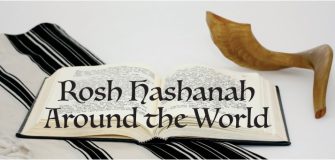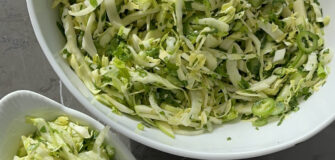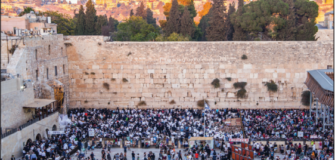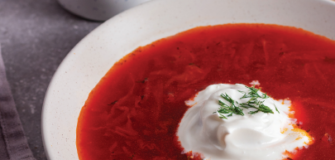Soup – Beyond the Matzo Ball
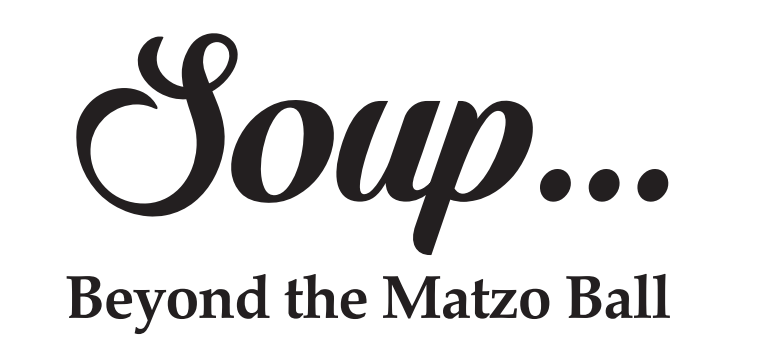
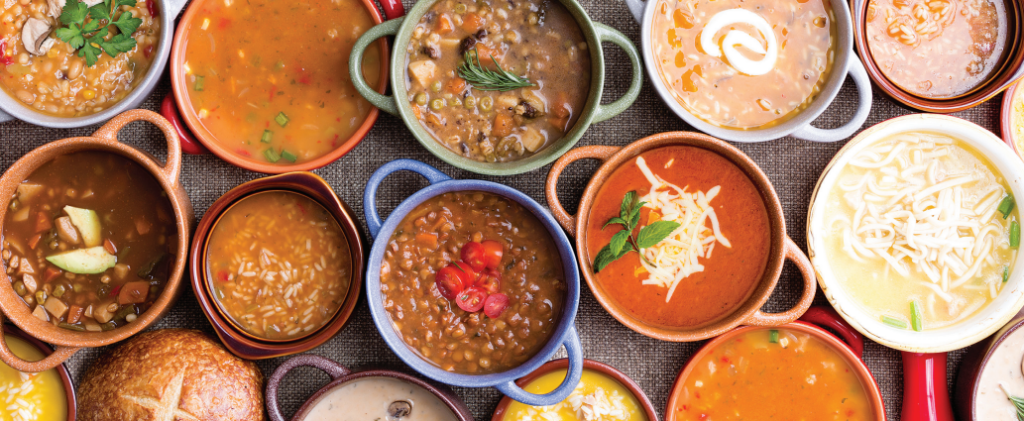
Soup has historical, cultural, and religious significance. Plus, it’s warm, filling, and comforting. It inspires memories, conversations, and connection.
Although chicken soup is often an integral part of most shabbat and holiday meals, many other soups are part of our heritage. There’s borsch, sweet and sour cabbage soup, split pea, mushroom barley, and more.
According to Micheline Maynard, author of Satisfaction Guaranteed: How Zingerman’s Built A Corner Deli Into A Global Food Community, soup has been a feature in many delis since the 1870s. “Matzo ball soup is considered to have been “invented” (I use that term loosely) in Hungary,” she says. “As Hungarians emigrated to America, they brought their soup with them, which is also the case for other soups found in delis.”
The soups offered by delis varied by who owned the deli. “If the owners were Russian, you had borsch or mushroom barley soup, with the ingredients readily available,” she explains. “Cabbage soup probably was brought by Polish and Baltic immigrants (they had cabbage, so they made cabbage soup).”
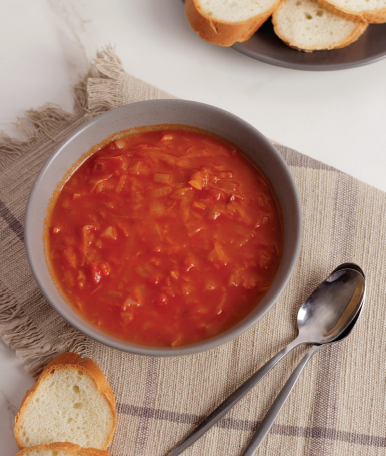
By contrast, split pea soup was found in many places: Britain, Canada, the Netherlands, Belgium, and France. “It most likely was brought by different ethnic groups who discovered a common thread through soup when they arrived,” she says. “Interestingly, many people think of split pea as a New England soup, and don’t realize that versions of it come from elsewhere.”
A starter course across many cultures, soup can be adapted to the seasons. It became a deli feature for a number of reasons.
“First, soup was available in any coffee shop or was sold by street vendors, from pushcarts or at stands set up outside transit stations, as in Chicago,” Maynard explains. “Soup was cheap to make and could make use of a variety of vegetables. Soup was improved by meat as flavoring and as an ingredient, but a little could go a long way.”
Joel Haber, whose blog, TasteofJew.com, explores Jewish Food and its links to Jewish Culture, says, “The earliest known cooked dishes were essentially stews, because that was probably the easiest way to prepare them. Throw multiple ingredients into a pot (instead of a single-ingredient roasted over an open fire), add some liquid, and cook for a long time. And what is a soup other than a thinned-out stew?”
Haber, who researches, writes and lectures on the topic of Jewish Food history, is currently writing a book that examines Shabbat stews from around the world, using them as a way of tracing the routes of Jewish migrations throughout history.
“The oldest recipes ever found are on cuneiform tablets found in Mesopotamia (Iraq of today), and date to around 3,600 years ago,” he says. “Not surprisingly, many of the recipes are soup or stew-like dishes, such as a lamb broth or a thickened soup of pigeon. These recipes were presumably eaten across the wider region, the area in which the Jewish people developed as a nation. So we presumably ate very similar foods as well.”
In colder climates, such as Eastern Europe, soups became even more popular in the winter months.
“There was of course chicken soup, “goldene yoich” (golden broth in Yiddish) for Shabbat dinner, but other soups were daily fare,” he explains. “They were filling, warming, and generally inexpensive.” Haber says he doesn’t have a favorite soup. It depends on his mood.
Danny Corsun, founder of Culinary Judaics Academy (CJA), says it is impossible for him to pick a favorite soup. “Like your children, you love them all equally,” he says.
Culinary Judaics Academy is an empowering and meaningful program that uses cooking as the vehicle to teach about Jewish values, holidays, Torah, Israel, and more. At CJA they make a lot of soup. And it is not just about the flavor, it’s about the memories of eating it.
“For instance, the rich and delicious Sweet and Sour Cabbage Soup provided conjures up wonderful memories for me of Passovers gone by with close family,” he says. “Whenever I eat it I am instantly transported to those Seder tables and to the people I love the most. By the way, the good news about this soup is that you can still have a yummy matzo ball in it, making it even more fantastic!”
Corsun compares soup to a “caring hug:” it’s warming, comforting, good for you. “There really is nothing like a bowl of hearty, delicious, hot soup is there?” Corsun asks. “But soup also has an inherent Jewish-ness to it. After all, it (in the form of a thin stew) plays a role in one of the Torah’s most important transactions.”
And Jacob gave Esau bread and a pottage of lentils, and he ate and drank and arose and left, and Esau despised the birthright. (Beresheit 25:34)
For Corsun soup is synonymous with Shab – bat.
“Growing up, my mom made soup for every Shabbat meal and it’s a custom I have carried on for my own children to this day (and I be – lieve my son and daughter will do the same for theirs),” he says. “Just like soup, and the caring hug, Shabbat provides that same warmth and comfort and, it’s just plain good for you. Essay – ist Ahad A’ham said, ‘More than Jews have kept Shabbat, Shabbat has kept the Jews.’ In my fami – ly (and many others), I think soup has been right there to help us along the way,” he says.
Yevgenia Nayberg would probably agree. She is the author and illustrator of the children’s picture book, I Hate Borsch!, which tells the sto – ry of a young Ukrainian girl who despises the beloved soup. After she emigrates to the United States, she discovers that American food leaves her feeling empty, so she decides to give borsch another try.
In her book, Nayberg writes, “There are as many borsch recipes as there are Ukrainian grandmas. And don’t even get me started on the neighboring countries of Eastern Europe and their borsch recipes! There is hot borsch and cold borsch, one with beans and another one with beef. There’s a version with prunes, and one with mushrooms. There’s even green borsch, which I refuse to discuss here.”
Nayberg says, “What sets my recipe apart from the traditional “grandmas of Kyiv” borsch is how I cook the cabbage. I slice the cabbage su – per thin, and I never ever boil it. It is cooked by residual heat and remains slightly crispy. There’s nothing worse than soggy cabbage strings in your borsch!”
Now, unlike her character, Nayberg, who now lives in New York, was 19 when she moved to the United States. And, by the way, she does not hate borsch. In fact, the book is a beautiful hom – age to the soup, its history, and her history.
Use our recipes to make a tasty pot of soup and cherish our heritage.
What’s your favorite soup and why? Email us at info@jlivingmedia. Bonus points for sending your fa – vorite recipe which we may publish!
















